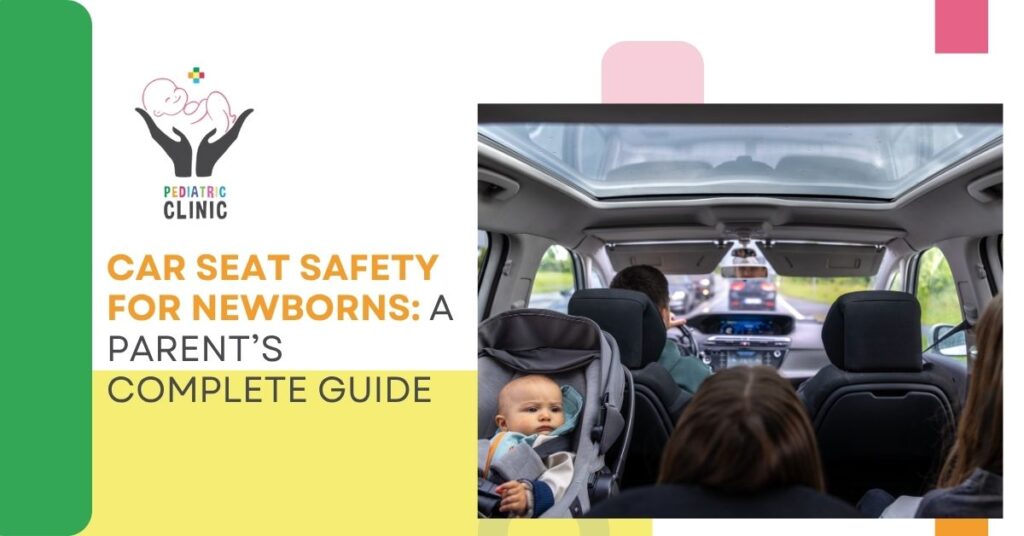When it comes to newborn safety, car seat safety for newborns is one of the most critical yet often overlooked topics among new parents. The first journey home from the hospital, daily trips to the pediatrician, and family outings all begin with a car ride—and your child’s life depends on how securely they’re placed in their car seat.
Choosing and installing the right car seat for newborns can drastically reduce the risk of serious injury in the event of an accident. Unfortunately, thousands of children are improperly restrained every year, making car seat safety for infants not just a legal concern, but a vital parental responsibility.
Selecting the Best Car Seat for Your Newborn
Every parent wants the best car seat for newborns, but what does “best” really mean? It refers to more than just price or brand—it means a car seat that is rear-facing, meets Indian safety standards, and is correctly installed and fitted for your baby’s weight and height.
There are three main types to consider:
- Infant car seats: Portable and ideal for newborns up to 12–15 months.
- Convertible car seats: Can be used from birth and converted as the child grows.
- All-in-one car seats: Long-term options that adjust from infant to booster stage.
When choosing the right car seat for newborns, check for certifications like AIS standards and manufacturing expiry dates. Never compromise on build quality or safety testing.
How to Install a Car Seat Correctly: Step-by-Step Guidance
Even the best car seat for newborns is ineffective if not installed correctly. A staggering number of parents install car seats improperly, increasing the risk of injury.
To ensure car seat safety for newborns, follow these critical installation steps:
- Position the seat rear-facing until at least the age of 2.
- Secure the car seat tightly using the vehicle’s seatbelt or the LATCH system.
- Make sure the seat doesn’t move more than 1 inch side-to-side when pulled.
- Adjust the recline angle to around 45 degrees to keep your baby’s head from falling forward.
Remember, correct installation of newborn car seats is the key to protecting your baby in case of a sudden stop or collision.
How to Buckle Your Newborn Safely in the Car Seat
After installing the seat, securing your newborn properly is the next critical step. For complete car seat safety for infants, follow these guidelines:
- The harness straps should be snug and lie flat—no twists or slack.
- Straps must be at or below the baby’s shoulders in rear-facing seats.
- The chest clip should be at armpit level—not on the stomach or neck.
- Avoid using thick clothing under the harness; use blankets over the straps if needed.
Improper harnessing is one of the most common errors in newborn car seat safety. A properly buckled baby is much less likely to sustain injury in any road mishap.
Common Mistakes Parents Make with Car Seat Safety
Many well-meaning parents unknowingly make critical errors. The following are the most common mistakes to avoid when practicing car seat safety for newborns:
- Using expired or second-hand car seats without safety verification
- Placing the car seat in the front seat where airbags can deploy
- Ignoring the importance of rear-facing position beyond 12 months
- Using loose harnesses or failing to adjust straps as the baby grows
These oversights can turn a protective device into a dangerous one. Always double-check your car seat setup and make it a habit to review the safety checklist for newborn car seats regularly.
When to Replace or Upgrade Your Baby’s Car Seat
Knowing when to replace your newborn car seat is as important as installing it right. A car seat should be replaced immediately after any road accident, even if no visible damage is present.
Also consider replacement if:
- The car seat has passed its expiry date
- Your baby exceeds the weight or height limit for the current seat
- There are visible signs of wear, broken parts, or missing labels
Upgrading to the next stage car seat must always be based on the child’s growth and the manufacturer’s specifications—not just age alone.
Final Thoughts on Car Seat Safety for Infants
Car seat safety for newborns is not just a safety rule—it’s a foundational parenting practice. It demands awareness, responsibility, and regular review. Every short ride, every appointment, and every trip is safer when your baby is securely restrained in a certified, well-installed, rear-facing car seat.
At Dr. Amandeep Child Specialist Clinic Greater Noida West, we encourage all parents to seek guidance on proper newborn travel practices. Whether you’re a first-time parent or looking to upgrade your current seat, we’re here to support your child’s journey—starting from the very first ride.
Book a Consultation for Personalized Newborn Safety Guidance
If you’re unsure about how to choose or install the right car seat for your newborn, don’t hesitate to consult us. At Dr. Amandeep’s Pediatric Clinic, we assist new parents with car seat education, newborn care, and postnatal safety.



